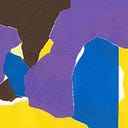
https://www.metmuseum.org/art/collection/search/325529
1. The tripartite separation of powers has a two-layered structure between the people and the government
Japan, the U.S., European countries, and other countries use the tripartite separation of powers to divide the state's authority. It comprises the “three powers” (“executive,” “judiciary,” and “legislative”), and also the “people” as the subject of evaluation, namely the sovereign.
Regardless of the reality, sovereignty in principle remains with the people. The form of the tripartite separation of powers, including the people, is shown on the right side of the diagram. In this diagram, the people are placed above the government (the three powers of the executive, legislature, and judiciary). It is a unidirectional “two-layer” structure by black arrows.

2. Problems of the two-layered structure
The preceding diagram is only an ideological structure. In the actual power structure, the black arrows are often reversed. In this situation, the remainder of the people is dominated by some of the party and vested interest groups.
The problem with the power relationship between the people and the government (the direction of the black arrow) is that it can be unilateral, no matter which way it is pointing. The unilateral domination of the government over the people leads to the denial of values such as freedom and human rights. Conversely, unilateral control of the government over the people (direct democracy) also leads to populism running amok in society. In a two-layered system, either the people are the kings or the government is the king. The direction of the arrow can only be flipped (one way or the other), so anyone in this structure cannot solve this problem.
Of course, it would be ideal for maintaining a two-way control relationship that is precisely balanced. Nevertheless, as conditions (2) and (3) of the division of power stated in the previous article, there is no further neutral layer outside the scheme for judging its correctness. In this two-layer structure, we can only wait and hope to correct the extreme directions if they appear.
Credits: Original idea by Asaki NISHIKAWA, Draft written by Toshihiro FURUYA, Drawing by Yoshimi KIKUYA, Simultaneous editing by VECTION
